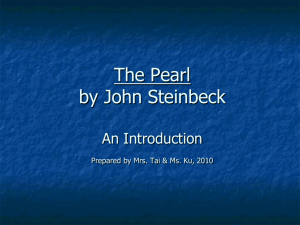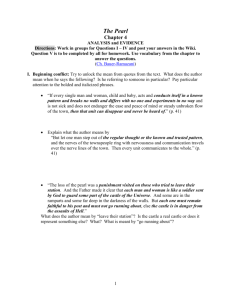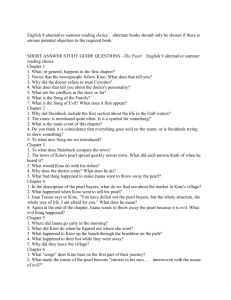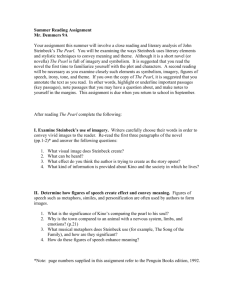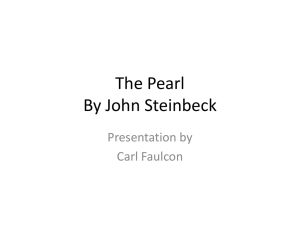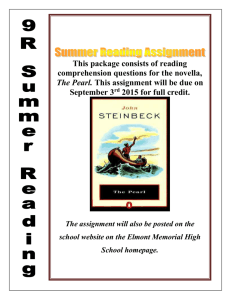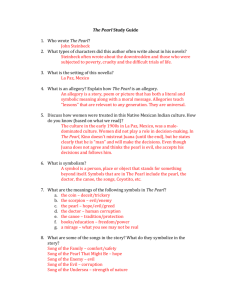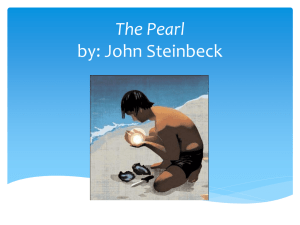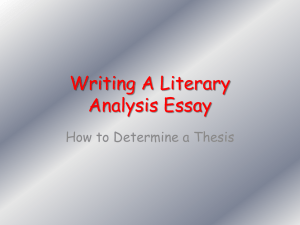Essay Organizer Name________________________ Pd. ______
advertisement
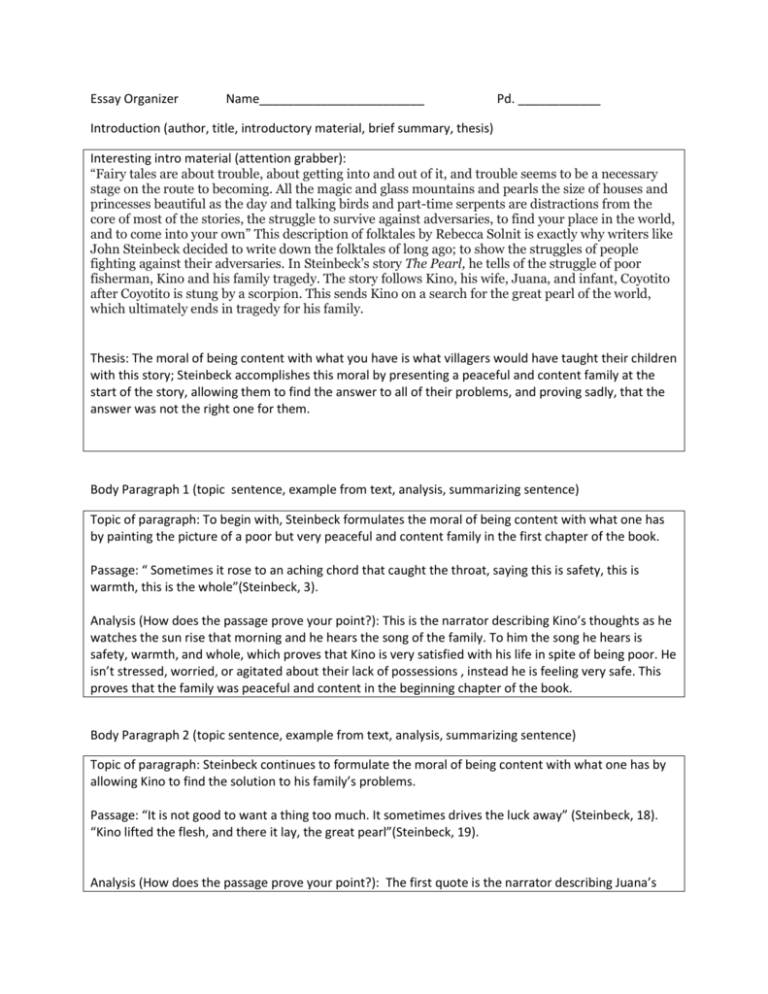
Essay Organizer Name________________________ Pd. ____________ Introduction (author, title, introductory material, brief summary, thesis) Interesting intro material (attention grabber): “Fairy tales are about trouble, about getting into and out of it, and trouble seems to be a necessary stage on the route to becoming. All the magic and glass mountains and pearls the size of houses and princesses beautiful as the day and talking birds and part-time serpents are distractions from the core of most of the stories, the struggle to survive against adversaries, to find your place in the world, and to come into your own” This description of folktales by Rebecca Solnit is exactly why writers like John Steinbeck decided to write down the folktales of long ago; to show the struggles of people fighting against their adversaries. In Steinbeck’s story The Pearl, he tells of the struggle of poor fisherman, Kino and his family tragedy. The story follows Kino, his wife, Juana, and infant, Coyotito after Coyotito is stung by a scorpion. This sends Kino on a search for the great pearl of the world, which ultimately ends in tragedy for his family. Thesis: The moral of being content with what you have is what villagers would have taught their children with this story; Steinbeck accomplishes this moral by presenting a peaceful and content family at the start of the story, allowing them to find the answer to all of their problems, and proving sadly, that the answer was not the right one for them. Body Paragraph 1 (topic sentence, example from text, analysis, summarizing sentence) Topic of paragraph: To begin with, Steinbeck formulates the moral of being content with what one has by painting the picture of a poor but very peaceful and content family in the first chapter of the book. Passage: “ Sometimes it rose to an aching chord that caught the throat, saying this is safety, this is warmth, this is the whole”(Steinbeck, 3). Analysis (How does the passage prove your point?): This is the narrator describing Kino’s thoughts as he watches the sun rise that morning and he hears the song of the family. To him the song he hears is safety, warmth, and whole, which proves that Kino is very satisfied with his life in spite of being poor. He isn’t stressed, worried, or agitated about their lack of possessions , instead he is feeling very safe. This proves that the family was peaceful and content in the beginning chapter of the book. Body Paragraph 2 (topic sentence, example from text, analysis, summarizing sentence) Topic of paragraph: Steinbeck continues to formulate the moral of being content with what one has by allowing Kino to find the solution to his family’s problems. Passage: “It is not good to want a thing too much. It sometimes drives the luck away” (Steinbeck, 18). “Kino lifted the flesh, and there it lay, the great pearl”(Steinbeck, 19). Analysis (How does the passage prove your point?): The first quote is the narrator describing Juana’s thoughts as Kino goes in search of the pearl. She is afraid that because they need the pearl so badly that Kino will not be able to find the pearl. This proves that they desperately needed this pearl to be their cure for the baby and they were afraid to hope for it. However Kino does find the pearl as evidenced in the second quote when he peels back the flesh of the oyster to reveal the pearl. The pearl gives them t Body Paragraph 3 (topic sentence, example from text, analysis, summarizing sentence) Topic of paragraph: Passage: Analysis (How does the passage prove your point?): Body Paragraph 4 (topic sentence, example from text, analysis, summarizing sentence) Topic of paragraph: Passage: Analysis (How does the passage prove your point?) Conclusion (restate thesis, closing thought) Closing thought idea (interesting reflection, insight, deep analysis, anecdote, connection to real life):
